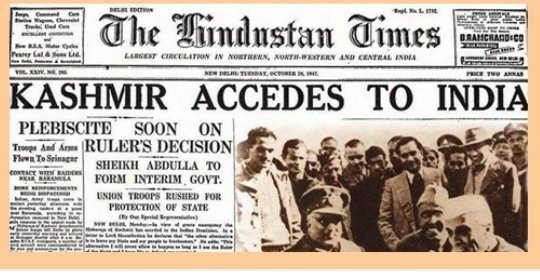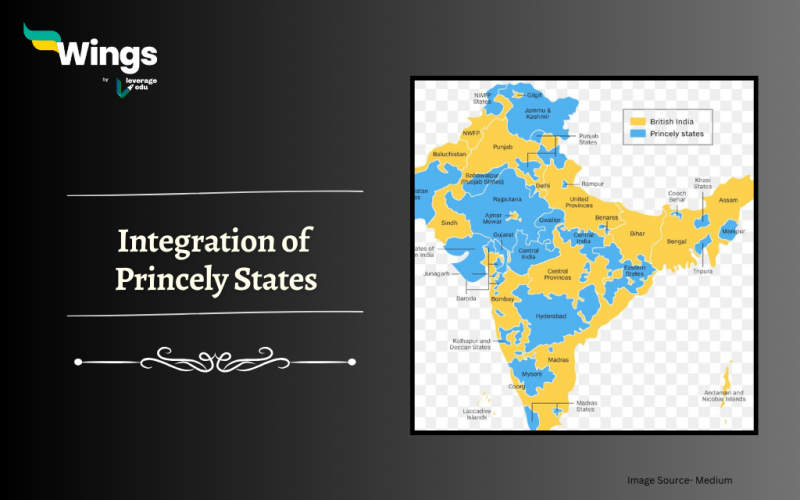The period following India’s independence in 1947 marked a crucial phase in the nation’s history. It involved the integration of more than 500 princely states that had the option to join India, Pakistan, or remain independent. This monumental task fell upon the shoulders of Sardar Vallabhbhai Patel, India’s first Deputy Prime Minister and Home Minister, along with V.P. Menon, the Secretary of the Ministry of the States. In this blog, we explore the intricate journey of integrating these princely states, each with its unique challenges and stories.
Table of Contents
Princely States: A Legacy of British India
Before delving into the integration process, it is essential to understand the context. Princely states, although not legally part of British India, were de facto subordinate to the British Crown. The British saw them as necessary allies to maintain control over India, and they granted autonomy to these states while retaining the right to appoint ministers and request military support when needed.
Sardar Patel’s Vision
Sardar Patel, often referred to as the “Iron Man of India,” was tasked with convincing these princely states to join the newly formed Indian dominion. He used diplomacy, persuasion and even incentives such as “privy purses” to win them over. Here are some remarkable stories of princely states and their paths to integration in the union of India:
Also Read – Which Were States Acquired Under Subsidiary Alliance?
Bikaner and Baroda: The Early Supporters
Bikaner and Baroda, from the state of Rajasthan, were among the first princely states to join the Indian Union. They recognized the benefits of being part of a unified India.
Jodhpur: Tempted by Pakistan
Despite a Hindu ruler and population, Jodhpur leaned towards Pakistan. Sardar Patel offered substantial benefits, assuring arms imports, rail connectivity and food supply during famines. Diwan of the neighbouring state Bikaner was used to convince the king of Jodhpur to make peace with India. On August 11, 1947, Maharaja Hanvant Singh signed the Instrument of Accession and Jodhpur joined India.

Travancore: A Strategic Decision
Travancore (Kerala), a southern maritime state rich in resources, initially resisted joining India. C.P. Ramaswamy Iyer, the Travancore Dewan, was invited by Jawaharlal Nehru, the Prime Minister to Delhi in an attempt to convince him. However, C.P. refused to sign the Act of Accession. CP was also hated by the Communists in the Kingdom because of his anti-communist stance. On July 25, 1947, an attempt was made on his life. C.P. managed to survive the assassination attempt and from his hospital bed, advised the king of Travancore that he should accede to India and so the act of accession was signed. On July 30, 1947, Travancore finally became part of India.
Also Read – What was the Mountbatten Plan?
Bhopal: A Nawab’s Change of Heart
In Bhopal, a Muslim Nawab ruled over a majority Hindu population. Initially opposed to Congress rule. When Lord Mountbatten requested him to sign the Act of Accession, the Nawab of Bhopal sought to prevent integration into the union of India by claiming that the interests of the Muslims in the Hindu-dominated region would be adversely affected after the accession to India. However, the people of Bhopal knew that this was just a ploy to protect the power of the Nawab in the state and did not have anything to do with the real interest of any community. Therefore, the Nawab was compelled to sign the act of accession with India. Nawab Hamidullah Khan decided to join India in July 1947, realizing the changing landscape of princely states.
Hyderabad: The Challenge of Nizam’s Aspirations
Hyderabad, the largest and wealthiest princely state, was presided over by Nizam Mir Usman Ali, with a predominantly Hindu population. He adamantly sought an independent state but faced opposition from India. The signs that the rule of Hyderabad would be short-lived can be seen in the movements of peasants led by a communist leader against Jagirdar and Talukdar, the Telangana rebellion and the propagation of the Gandhian programs Prabhat Pheri and khadi. The Nawab of Hyderabad managed to mobilize a band of orthodox Muslims known as Ittehadul Muslameen, and a militia known as Razakars. These challenged the concept of India. In the end, the Government of India took police action in 1948, resulting in the surrender of Hyderabad on September 17, 1948. In exchange for this, the Nawab agreed to cede Hyderabad to India. In return, he became the Rajpramukh (Governor) of the democratic state of Hyderabad. After armed conflicts and Operation Polo in September 1948, Hyderabad became an integral part of India.

Junagadh: A Complex Tale
Junagarh was then a princely state with a majority Hindu population but a Muslim ruler. The state had already signed a treaty with Pakistan to become part of Pakistan. India, on the other hand, strongly believed in the popular will for such a decision to be made.
V.P. Menon and V.B. Patel sought the intervention of Shahnawaz Khan Bhutto, the Diwan of Junagarh. Shahnawaz Bhutto agreed to hold the plebiscite, but not before cutting off air and land links to Junagadh. In the aftermath of the clashes between the Indian forces and the Junaghadi army, the Nawab along with his family fled to Pakistan.
The Dewan of Junagadh, Sir Shahnawaz Bhutto (Zulfiqar Alibhutto’s father) decided to seek the intervention of the Government of India and wrote to Mr. Buch (the then Regional Commissioner of Saurashtra) in the Government of India. The plebiscite was held and Junagadh later acceded to India. This resulted in Junagadh becoming part of India through a plebiscite in February 1948.
Also Read – India’s Journey to Independence from 1857 to 1947
Kashmir: A Pivotal Battle
The story of Kashmir was particularly complex due to its strategic location and religious demographics. At the time of independence, Kashmir was neither part of India nor of Pakistan. Maharaja Hari Singh initially offered a standstill agreement to both India and Pakistan. However, on 22nd October 1947, a group of Pakistanis, supported by their army, invaded Kashmir. The King of Kashmir, Maharajah Hari Singh, sought the help of the Indian Government. On October 26, 1947, he signed the Instrument of Accession, and Indian troops were airlifted to defend the state. Finally, on 31st December 1948, a cease-fire was declared between India and Pakistan. India then took the matter to the UN. In 1951, the UN asked Pakistan to withdraw its army from Kashmir and requested India to hold a plebiscite there. After a plebiscite in 1952 and the Delhi Agreement, Jammu and Kashmir became an integral part of India.

The Uniting of a Nation
The integration of princely states after independence was a remarkable feat of diplomacy and determination. Sardar Patel’s vision, along with the support of leaders and officials, ensured the unification of India into a single, sovereign nation. Each princely state’s journey was unique, reflecting the complexity of the task. Today, these states are integral parts of the dominion of India.
Relevant Blogs
This blog was all about the integration of princely states. If you want to read more articles like this, you can get Short notes on the Modern History of India here. Also, you can visit our general knowledge page on Indian History!
 One app for all your study abroad needs
One app for all your study abroad needs













